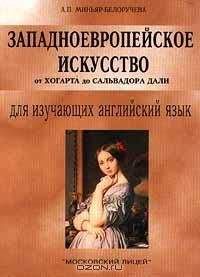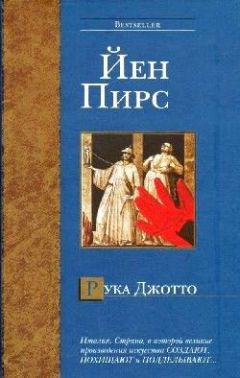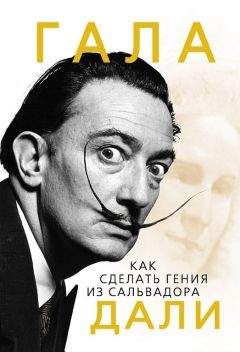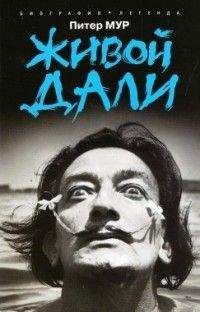a recently vacated studio; public derision; a revolutionary painting; an instantaneous glimpse; to observe ships; the unending stream of time; to devise new methods; to record the immediate impression of light on smth; to establish a new Impressionist subject; successful from the artistic point of view; to single out moments; landscape painting; to record in series; a lacy faзade.
ii. Give English equivalents of the following phrases:
удачная с художественной точки зрения (картина); недавно освободившееся ателье; презрение публики; пейзажная живопись; ажурный фасад; новаторская картина; написать серию работ; наблюдать за кораблями; бесконечный поток времени; разработать новые методы; создать новый образ; момент восприятия света; запечатлеть непосредственное отражение света.
ii. Make 'p questions of yoir own with the given phrases.
iv. Arrange the following in the pairs of synonyms:
a) to establish; to demonstrate; impressive; flank; derision; streak; blob;
b) to show; to found; moving; lateral edge; contempt; stripe; a huge lump.
IV. Here are descriptions of some of Monet's works of art. Match them up to the titles given below.
1. In this painting Monet demonstrated that colour belongs not to the object but to the moment of the visual experience.
2. In this picture the new Impressionist subject – the moment of experience in light was established.
3. The iron-and-glass train shed offered to Monet a tissue of changing light and colour, dominated by blue and silver.
4. The painting represents the moment just about noon when the low winter sun is still striking the southern flanks of the massive masonry.
a. Rouen Cathedral in Full Sunlight
b. Gare Saint-Lazare in Paris
c. Impression – Sunrise, Le Havre
d. Women in the Garden
V. Translate the text into English.
Клод Моне является истинным главой школы импрессионистов. В его произведениях воплотилась основная идея импрессионизма – идея света и воздуха. Мир Моне с его растворяющимися предметами постепенно лишается материальности и превращается в гармонию световых пятен.
Моне нередко писал один и тот же вид в разное время суток и в разное время года. Таковы его серии «Стога» и «Руанский собор». Беглыми, как будто небрежными мазками Моне создавал впечатление колышущегося от ветра поля или полной движения улицы Парижа. Он мог запечатлеть и знойное марево летнего дня, и влажный снег французской зимы. Все схвачено как бы случайно, но увидено зорким взглядом художника.
Моне прошел все этапы: он знал нищету, непризнание, насмешки, затем приобрел известность, переросшую в триумф. Моне пережил свою славу. Он был свидетелем того, как устаревали его идеи, которым он был верен до конца жизни.
VI. Summarize the text
VII. Topics for discussion.
1. Impressionism.
2. Monet's principles and methods of painting.
3. Monet's artistic heritage.
Unit XII Pissarro And Renoir
An extremely gifted member of the Impressionist group was Camille Pissarro (1830-1903). He was the most careful and craftsmanly of them all. His companionship and advice provided a technical foundation for Cezanne, who called him «humble and colossal». Pissarro is both in the scrupulously painted Boulevard des Italien, Paris – Morning Sunlight, of 1897. With infinite care he recorded the innumerable spots of colour constituted by people, carriages, omnibuses, trees, windows, and kiosks in this view of one of the great metropolitan thoroughfares, whose activities provided the subject for many Impressionist paintings. Impressionist artists often worked side by side painting the same view of a street, a cafe, or a riverbank at the same moment of light and atmosphere, and it is often only the special sensibility and personal touch of each painter that makes it possible to tell their works apart.
The sparkling Les Grands Boulevards, of 1875, by Pierre Auguste Renoir (1841-1919) shows how much latitude remained for individuality in treating a similar subject at the height of the collective phase of the Impressionist movement. Renoir, the most exciting and active of the group, has not bothered with details. He has captured a moment of high excitement as we look across a roadway from the shadow of the trees to the trotting white horse pulling a carriage filled with people in blazing sun. Warmth, physical delight, and intense joy of life are the perpetual themes of Renoir. Trained at first as a painter on porcelain, he later studied with the academic painter Charles Gleyre and soon made the acquaintance of the Impressionist group, with whom he exhibited until 1886.
The best painting of the Impressionist highest point is Renoir's Le Moulin de la Galette, of 1876, depicting a Sunday afternoon in a popular outdoor dancing cafe on Montmartre. Young couples are gathered at tables under the trees, or dancing happily through the changing interplay of sunlight and shadow Characteristically, there is no trace of black, even the coats and the shadows turn to blue. One could scarcely imagine a more complete embodiment of the fundamental theme of Impressionist painting, the enjoyment of the moment of light and air. Although he later turned toward a Post-Impressionist style, Renoir never surpassed the beauty of this picture, which sums up visually the goal he once expressed in words: «The earth as the paradise of the gods, that is what I want to paint».
Make sure you know how to pronounce the following words:
Camille Pissarro; paradise; Auguste Renoir; perpetual; Post-Impressionist; thoroughfare; companionship; acquaintance; Montmartre; boulevard [
NotesBoulevard des Italien, Paris – Morning Sunlight – «Итальянский бульвар. Париж»
Les Grands Boulevards – «Большие Бульвары»
Le Moulin de la Galette – «Мулен де ла Галетт»
Charles Gleyre – Чарльз Глейр, швейцарский художник, в студии которого собирались импрессионисты
TasksI. Read the text. Make sure you understand it. Mark the following statements true or false.
1. Cezanne called Renoir «humble and colossal».
2. Pissarro, the most exciting and active of the group, never bothered with details.
3. Impressionist artists often worked side by side painting the same view of a street, a cafe, or a riverbank at the same moment of light and atmosphere.
4. Pissarro was the most exciting and active of the group.
5. At first Renoir was trained as a sculptor.
6. Pissarro exhibited with the Impressionist group until 1886.
II. How well have you read? Can you answer the following questions?
1. How is Camille Pissarro characterised?
2. What is depicted in the Boulevard des Italien, Paris – MomingSunlight?
3. What provided subjects for many Impressionist paintings? What is the fundamental theme of Impressionist paintings?
4. What is the best painting of the Impressionist highest point? What does it represent? Did the painter manage to surpass the beauty of this picture?
5. What were Renoir's perpetual themes? What were Renoir's goals? What did Renoir picture in Les Grands Boulevards?
6. When did Renoir turn toward the Post-Impressionist style?
III. i. Give Russian equivalents of the following phrases:
an extremely gifted painter; the Impressionist group; to provide a technical foundation for; to record spots of colour; a great metropolitan thoroughfare; to work side by side; to paint the same view of a street; at the height of the phase of; the Impressionist movement; to capture a moment of high excitement; to make acquaintance; to surpass the beauty of the picture.
ii. Give English equivalents of the following phrases:
никогда не превзойти красоты картины; работать бок о бок; запечатлеть наиболее волнительный момент; очень талантливый художник; широкая магистраль крупного города; писать один и тот же городской пейзаж; обеспечить технической базой; зарисовывать пятна цвета; наивысший период творчества; познакомиться.
iii. Make up sentences of your own with the given phrases.
iv. Arrange the following in the pairs of synonyms:
a) to surpass; perpetual; to provide; paradise; fundamental;
b) Eden; essential; to exceed; to furnish; continuous.
IV Here are names of the painters and the titles of their works. Match them up Describe these works of art.
1. Pissarro
2. Renoir
a. Les Grands Boulevards
b. Le Moulin de la Galette
c. Boulevard des Italien, Paris – Morning Sunlight
V. Translate the text into English.
В картине «Бульвар Монмартр в Париже» Камиль Писсарро запечатлел один из красивейших бульваров столицы Франции. Этот пейзаж написан художником из верхних окон отеля. Зритель видит длинную улицу в день ранней весны. Деревья еще без листьев, видимо, только что прошел дождь. Благодаря свободным и быстрым мазкам художнику удалось передать живое ощущение улицы, заполненной пешеходами и потоком катящихся экипажей.
Огюста Ренуара называли «певцом счастья». Его искусство радостно и лучезарно. Пейзажная живопись мало увлекала Ренуара, в центре внимания живописца был человек. Художник оставил много портретов, главным образом женских. В них нет психологических углублений. Высоким живописным мастерством также отмечены созданные Ренуаром жанровые сцены и натюрморт с цветами.
VI. Summarize the text.
VII. Topics for discussion.
1. The methods of painting of Pissarro and Renoir.
2. The artistic heritage of Pissarro and Renoir.
Unit XIII Cezanne (1839-1906)
The leading painter of the late nineteenth century in France, one of the most powerful artists in the history of Western painting, was Paul Cezanne. Son of a prosperous banker in the southern French city of Aix-en-Provance, Cezanne never experienced financial difficulties. He received some artistic training in Aix. Cezanne arrived in Paris for the first time in 1861, but he never set up permanent residence there. At first Cezanne was interested m the official art of the Salons but soon achieved an understanding of Delacroix and Courbet, and before long of Manet as well, but his early works were Romantic. Only in the early 1870s Cezanne adopted the Impressionist palette, viewpoint, and subject matter under the tutelage of Pissarro. Cezanne exhibited his paintings with the Impressionists in 1874, 1877, 1882.
During most of his independent career Cezanne remained in Aix. His isolation from other artists helped him to concentrate on the formation of a new style of painting. Cezanne's mature style is often interpreted in the light of his celebrated sayings: «I want to do Poussin over again, from nature," «I wish to make of Impressionism something solid and durable, like the art of the museums," and «Drawing and colour are not distinct… The secret of drawing and modelling lies in contrasts and relations of tones.»
Among the subjects Cezanne repeatedly studied was Mont Sainte Victoire, the rocky mass that dominates the plain of Aix. His Mont Sainte-Victoire was painted about 1885-1887. Nothing indicates the time of the day or even the season. It neither rains nor snows in this landscape. Time is defeated by permanence. In this picture it is not clear where Cezanne places the observer. It is not certain where the tree is rooted. Some objects are identifiable as houses, trees, fields, but Cezanne's visual threshold is high and below that level nothing is defined. The effect of durability and massiveness is produced by a new use of the Impressionist colour spots. The landscape becomes a colossal rock crystal of colour – a cubic cross section of the world. Its background and foreground planes are established by branches and by the mountain whose rhythms they echo. The constituent planes embrace a great variety of hues of blue, green, yellow, rose, and violet. The delicate differentiation between these hues produces the impression of three-dimensional form. To construct form Cezanne has used the very colour patch the Impressionists had used ten years before to dissolve it. He has achieved from nature a construction and intellectual organisation much like that Poussin had derived from the organisation of figures, and made of Impressionism something durable, reminding us of the airless backgrounds of Giotto. Cezanne created a world remote from human experience. The beauty of his colour constructions is abstract, and it is no wonder that many artists of the early twentieth century, especially the Cubists, claimed him as the father of modern art.
Still life was to Cezanne second only to landscape. His Still life with Apples and Oranges was painted between 1895 and 1900. The arrangements of fruits, bottles, plates and a rumpled cloth on a tabletop never suggest the consumption of food or drink; they are spheroid or cylindrical masses. The appearance of reality is neglected; the table has a tendency to disappear under the table-cloth at one level and emerge from it at another, and the two sides of a bottle can be sharply different. Whether Cezanne did not notice such discrepancies in his search for the right colour to make a form go round in depth, or whether he decided on deformations consciously, has never been convincingly determined. He cared for subjects as arrangements of form and colour, but they also possessed for him strong psychological significance.





